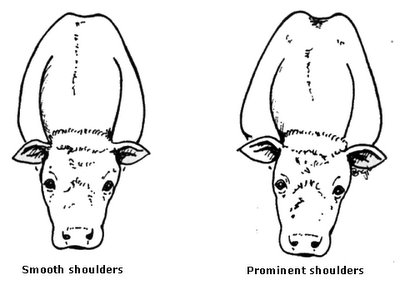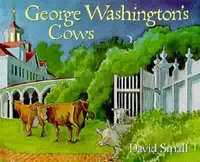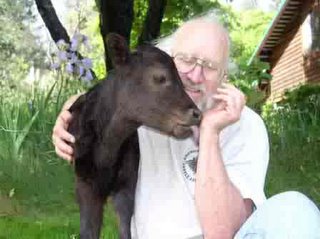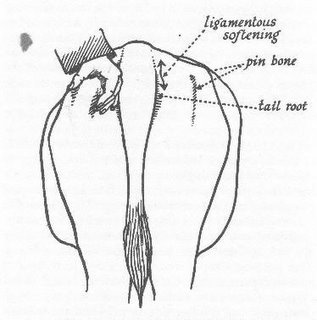There was also a recent discussion of this topic on the UK Discussion board with some older remedies.
Ringworm of Cattle
R. L. Morter, D.V.M., C. James Callahan, D.V.M.
School of Veterinary Medicine, Purdue University
CauseRingworm is caused by infection of the hair and surface layers of the skin by fungi. It occurs in all species of animals including man. Fungal infections cause little, if any, permanent damage or economic loss. However, because ringworm is a transmissable infectious disease, animals with lesions are barred from exhibitions or shows by regulations of the State Board of Animal Health.
Infection of the skin and hair of cattle is most frequently due to Trichophyton verrucosum, a spore forming fungi. Spores are shed from the lesion by broken hairs or scabs from the lesion. The spores remain alive for years in a dry environment; and because they do, halters, grooming equipment, or even a barn can remain infective for years.
TransmissionDirect contact with infected animals, particularly with cattle confined to a barn, is a common method of spreading the fungi. Some infected calves have a degree of natural immunity that prevents development of lesions; however, they can be a source of infection. Show calves are frequently infected from spore contaminated equipment that has not been properly cleaned.
Spores germinate and attack the shafts of the hair and the surface layers of the skin. Exudate oozes from the damaged skin and mixes with debris from skin and hair, thereby forming a crusty scab. The scab is grey-white and noticeably higher than the surrounding skin. Infection spreads from the center outwards and results in the circular lesion 1 to 1.5 inches in diameter. Adjacent lesions may overlap and create larger infected areas. Lesions are most frequent on the head and neck, but they may be found over the entire body in severe cases. Scabs may fall from older lesions and leave a hairless area in the center, one that has a ring of exudate at the edge. Hence, the name ringworm.
TreatmentMany of the treatments appear successful because of spontaneous recovery shortly after treatment has been started. Ringworm is frequently severe in confined cattle during the winter; spontaneous recovery occurs in the spring and summer. Topical treatment, application of the medication directly onto the lesion, is the usual procedure. Medication cannot penetrate the crusts; the crusts should be removed by scraping or brushing. They should be collected and burned to avoid contaminating the premises. Lesions should be treated at least twice, three to five days apart. Topical application of a 2% solution of iodine, Whitfield's ointment (also used to treat athlete's foot in man), or thiabendazole paste are all suitable. Oral griseofulvin may be used but the prolonged treatment and expense of the drug make it impractical in all but valuable animals.
PreventionVaccines are not available. But, cleaning and disinfecting barns with a strong detergent followed by a solution of 1 gallon of household bleach diluted with 3 gallons of water does a good job. Halters and grooming equipment can be disinfected with bleach or a 4% solution of formaldehyde. At the first sign of the lesions of ringworm, topical treatment should be started. Reducing the density of animals and direct contact in addition to increased exposure to sunlight and being maintained on dry lots help prevent the spread between animals.

















